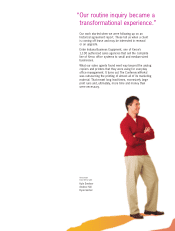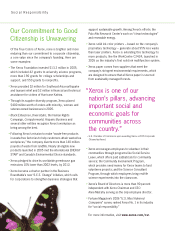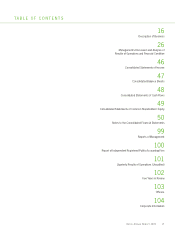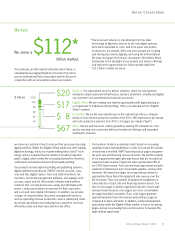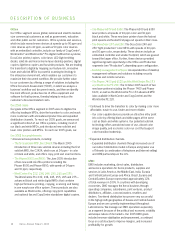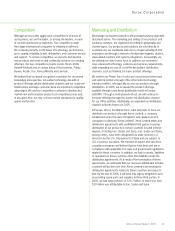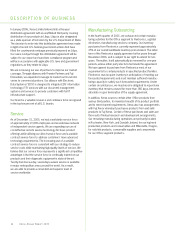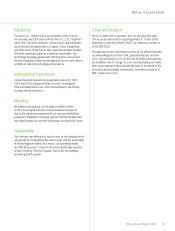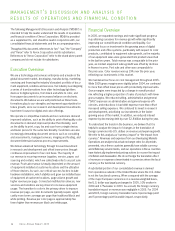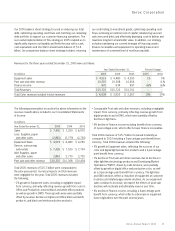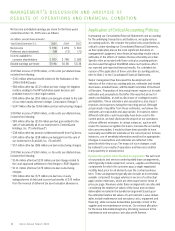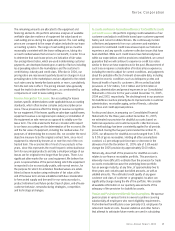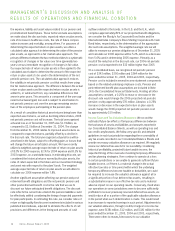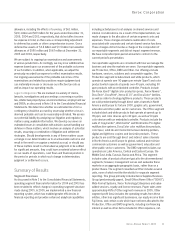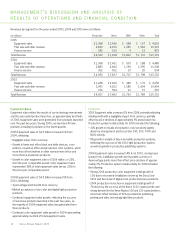Xerox 2005 Annual Report Download - page 30
Download and view the complete annual report
Please find page 30 of the 2005 Xerox annual report below. You can navigate through the pages in the report by either clicking on the pages listed below, or by using the keyword search tool below to find specific information within the annual report.
DESCRIPTION OF BUSINESS
22
Patents, Trademarks and Licenses
We are a technology company. With our PARC subsidiary, we
were awarded nearly 450 U.S. utility patents in 2005, ranking
us 35th on the list of companies that had been awarded the
most U.S. patents during the year. With our research partner,
Fuji Xerox, we were awarded nearly 650 U.S. utility patents in
2005. Our patent portfolio evolves as new patents are awarded
to us and as older patents expire. As of December 31, 2005,
we held approximately 8,100 design and utility U.S. patents.
These patents expire at various dates up to 20 years or more
from their original filing dates. While we believe that our portfolio
of patents and applications has value, in general no single
patent is essential to our business or any individual segment.
In addition, any of our proprietary rights could be challenged,
invalidated or circumvented, or may not provide significant
competitive advantages.
In the U.S., we are party to numerous patent licensing agreements,
and in a majority of them, we are a licensee. Most of the patent
licenses expireconcurrently with the expiration of the last patent
identified in the license. In 2005, with our PARC subsidiary, we
added approximately 15 agreements to our portfolio of patent
licensing agreements, and either we or our PARC subsidiary
was a licensor in 13 of the agreements. Xerox’s licensing efforts
include a number of cross-licensing agreements with companies
with substantial patent portfolios. Those agreements vary in
subject matter,scope, compensation, significance and time.
Among the more recent licenses areagreements with Canon,
Microsoft, IBM and Hewlett-Packard.
In the U.S., we own approximately 560 trademarks (either
registered or applied for). These trademarks have a perpetual
life, subject to renewal every ten years. We vigorously enforce
and protect our trademarks. We hold a perpetual trademark
license for “DocuColor.”
Research and Development
Investment in R&D is critical to drive future growth and we
have aligned our investments with our strategic planks: Office,
Production and Services. Our goal is to continue to create
innovative technologies that will expand current and future
markets. Our R&D investments employ three key themes:
1) continue to reinvent our machines to deliver better quality,
more functionality and improved productivity, 2) rethink how
people work, including the use of variable information printing
to customize documents and 3) redefine the document through
new inventions. Our research scientists regularly meet with
customers and have dialogues with our business groups to
ensure they understand customer requirements and develop
products and solutions that can be commercialized.
In 2005, R&D expense was $755 million, compared with
$760 million in 2004. 2005 R&D spending focused primarily on
the development of high-end business applications to drive the
“New Business of Printing,” on extending our color capabilities,
and on lower-cost platforms and customer productivity enablers
to drive digitization of the office. The Xerox iGen3, an advanced
next-generation digital printing press launched in October
2002 that uses our patented imaging technology to produce
photographic-quality prints indistinguishable from offset,
is an example of the type of breakthrough technology we
developed and that we expect will drive futuregrowth.
In addition, sustaining engineering expenses reported within
R,D&E, were$188 million in 2005 and $154 million in 2004.
Xerox Annual Report 2005
$1000
200
400
600
800
05 04
Xerox Research, Development and Engineering Expenses
Our R&D is strategically coordinated with that of Fuji Xerox, which
invested $720 million in R&D in 2005 and $704 million in 2004.
$943
$914
($ millions)


